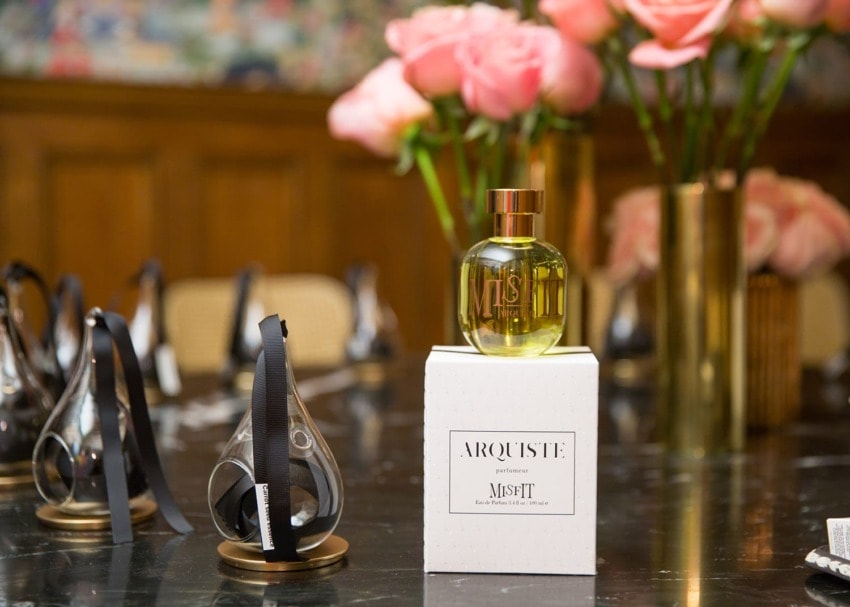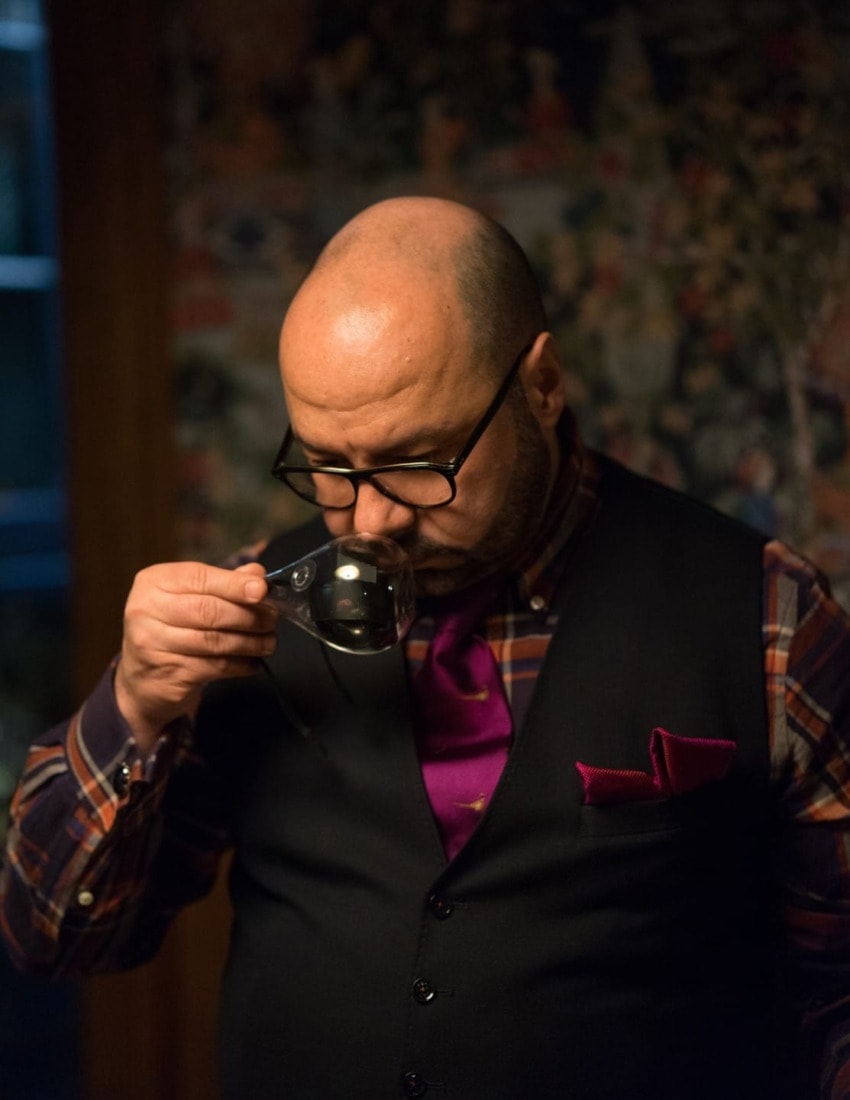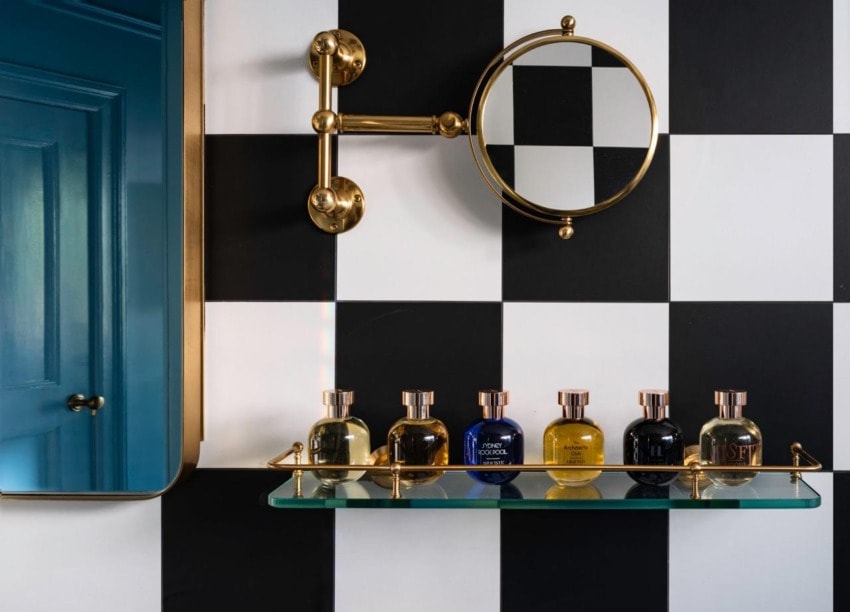Arquiste’s Carlos Huber Debuts a Seductive New Scent
A sensual reinterpretation of patchouli, Misfit is informed by art and architecture while capturing the aroma’s provocative history


Forget what you think you know about patchouli. At least that’s what Carlos Huber wants you to do when dabbing on Misfit, the 14th and latest scent from his boutique perfume brand, Arquiste. True to its name, Misfit is an amber-woody concoction of sensuality that defies convention and flirts with the outer edges of nonconformity.
“I’m very interested in the historical reference of fragrance,” Huber tells Galerie from his New York City apartment, a classic West Village space that was recently renovated and functions as both home and office. “Like every other human creation, fragrance is very representative of a specific time and place. The more you learn about fragrances, the more you see how individual scents correlate to the art, architecture, and sculpture of their time.”
Recommended: Bergdorf Goodman Opens Gorgeous Bar with Michelin-Starred Chef Austin Johnson
This didactic approach makes sense for a lifelong student of design: As a child in his native Mexico City, Huber was drawn to the skyline’s mix of Aztec, Spanish Colonial, Beaux Arts, and modern structures. He graduated from Columbia University with honors in historic preservation, and before launching Arquiste, he worked with the architect Jorge Otero-Pailos on experimental approaches to historic sites. Later, he held a position with Polo Ralph Lauren, as a designer for the brand’s retail environments.

As passionate about fragrance as he is about historic architecture, Huber reached out some ten years ago to Rodrigo Flores-Roux, one of the world’s leading “noses”—the industry term for scent-attuned perfumers—to help launch Arquiste. And though Flores-Roux might be famous for some of the most iconic fragrances in the business, from Clinique Happy to Tom Ford’s Neroli Portofino, one can only conclude that working with Huber offers a unique experience, even for such an expert. “I thought it would be interesting to approach fragrances like restoring buildings, as a preservationist would do,” says Huber. “And so I’m constantly learning what the past actually smelled like in order to bring it—in a realistic way—into the present.”
Recommended: Ten of the Most Beautiful Wellness Spaces in New York

The idea for Misfit was inspired by the circular, somewhat complicated past of its core note, patchouli. Though it has come to be equated with the free-loving, freewheeling hippie movement of the 20th century, patchouli’s origins are in fact more provocative. The Western world was introduced to the scent at the end of the 18th century, when Kashmir-style shawls became a fashion staple among aristocratic and bourgeois women. To preserve them from moths and other insects on their journey from Asia to Europe, packers would line the folds of these fine-wool wraps with patchouli leaves. The distinctive scent quickly became synonymous with luxury, distinction, and exoticism—much like the delicate, handmade accessories themselves.
By 1808, however, European manufacturers in such places as Paisley, Scotland, and throughout France began producing shawls of their own, down to the signature twisted-teardrop patterns that adorned them (hence the modern “paisley,” which is actually a motif of Persian descent). In order to pass them off as authentic, French producers asked perfumers to create a scent to cover them with. By the 1870s, with availability at a new high and prices reaching affordable lows, the once-prized possession of the upper classes had shifted out of style. The shawls—and their associated scent—became fashionable among prostitutes, bohemians, and figures lurking on the fringes of society. Patchouli, and its newfound association with odalisques, Orientalist fantasies, and earthly pleasures, became the scent of decadence—the signature of professionals of dubious reputation. “In researching it,” Huber says, “I found it so interesting to learn about patchouli’s original meaning in terms of counterculture.”

And so Misfit was born, to make the undesirable desirable once again—to be a misfit itself and reclaim patchouli’s lost elegance on new terms. The unisex fragrance is a little bit louche, a little bit luxurious. “Instead of re-creating it in a very brutalist manner,” Huber tells Galerie, “we formed the fragrance around other balsams, powders, creams, and lotions from the environment it would have originally been associated with: a French boudoir of the 19th century.” With key notes of carrot seed essence, French lavender essence, ambrette seed absolute, Akigalawood, styrax, Spanish cistus concrete, Venezuelan tonka bean absolute, tolu balsam, and a proprietary combination of two patchouli essences, Misfit is the sort of scent you might have caught wind of at the Moulin Rouge while chatting up Henri de Toulouse-Lautrec and eyeing an actress-cum-courtesan.
“It’s definitely patchouli,” Huber asserts, “but it has a velvety softness to it—a kind of decadent feel, which, I think, is very unlike what people think of patchouli today.”